
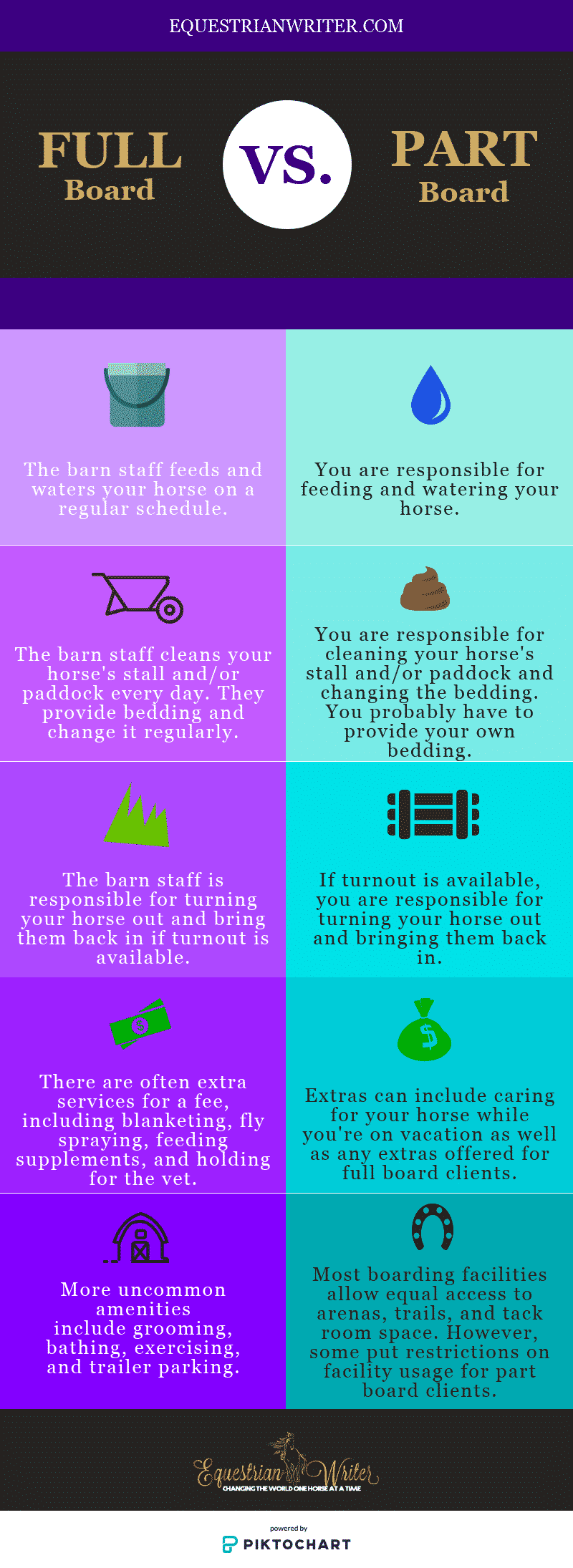
Being a first time horse owner can be a bit intimidating. The process of just finding the right horse to buy is hard enough, but if you don’t have anywhere to keep the horse at home, you need to find somewhere to board. This is another nightmare in itself. Here is a quick breakdown of the different types of boarding.
Types of Boarding
Not all types of boarding are created equal. It is important to know the difference between the types of boarding that are generally available.
Full Care
Full care board is exactly what it sounds like. You are paying the boarding facility to completely take care of your horse for you. This often includes, but is not limited to:
- feeding
- watering
- stall cleaning
- turning out to pasture
- bringing in from the pasture
- basic daily visual inspections to ensure there are not obvious signs of injury or other ailments
Related Content: What do I look for in a good boarding facility?
Some full care boarding facilities will provide extra services. Common extras include:
- blanketing
- putting fly masks on and off
- fly spraying
- holding for the vet or farrier
- making group vet and farrier appointments for all the horses in the barn
- administering medication or other medical treatments (upon direction from a vet)
- feeding supplements
There are also some extras that are not as common. They include, but are not limited to:
- grooming
- bathing
- exercise
For full care boarding it is generally expected that the horse will eat the hay and feed provided by the boarding facility. Feeding a special diet comes with a small fee given the extra work it entails. The cost of hay and feed will be included in the price of full board. Any special feeds and supplements must be provided by the owner.
Partial or Self Care
Partial or self care board is often a little cheaper, but it requires a extra effort on your part. You are basically just renting the stall. The actual care for the horse is up to you. You are responsible for:
- feeding
- watering
- stall cleaning
- turning out to pasture
- bringing in from the pasture
- blanketing
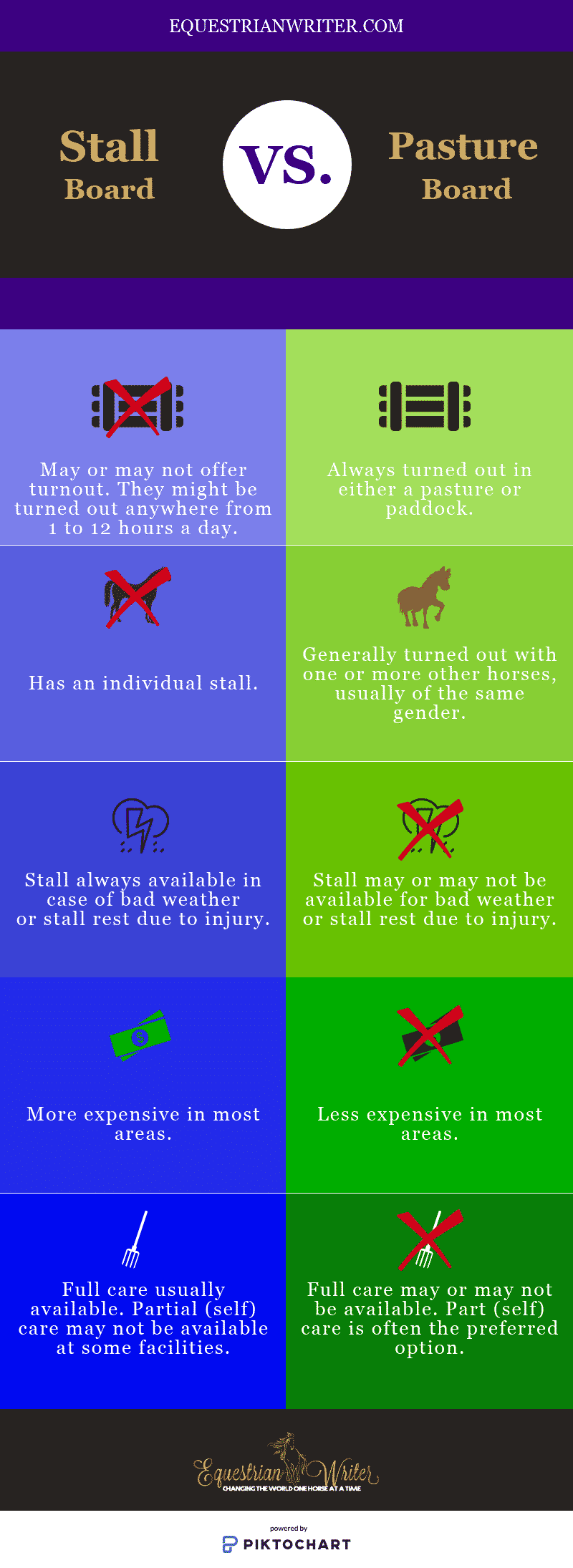
Stall Boarding
There are different definitions of stall board. Some boarding barns don’t offer any turnout to stall boarders. You get a stall, that’s it. If you want to exercise your horse you have to ride, lunge, or hand walk them.
Some barns will offer you the chance to turn your horse out in an arena or small paddock when you are there and the space is available, but they will not handle turnout themselves.
Ideally the barn will offer limited turnout for a few hours a day in either a paddock or small pasture.
Pasture Boarding
This is the ideal situation for many horses. Pasture board means your horse is living out on pasture 24/7, usually with a herd. They have shelter, food, and water. Some facilities only offer hay to pasture boarders. Others only offer self care pasture boarding. Some offer full care pasture boarding with all the same amenities as stall boarding. It has the added bonus of being cheaper in most areas.
High Maintenance and Special Needs Horses
Hard keepers and special needs horses are always tricky to deal with in a boarding situation. They take special accommodations and individual attention. The bigger the boarding barn is, the less likely they are to be willing or able to work with you.
Negotiating a special diet for your horse on full board can be tricky. It is generally advised that you get an assessment from an equine veterinarian or nutritionist to back you up as this may make the barn quicker to work with you. Be prepared to compensate them for their time though. Never expect them to accommodate you for free. They are running a business after all and their time is precious.
If your horse is on a strict diet due to a history of found, food allergies, or any other serious condition that means getting the wrong food for even a single meal could seriously damage their health, you are better off going with self care. It’s not the boarding barns are neglectful, but when you have and entire herd of horses to feed, mistakes happen. That’s just the way it is. You are better off feeding your horse yourself because you probably only have one or two horses to feed as opposed to ten or twenty.
The other option is to find a boarding barn that specializes in retired or special needs horses. These barns can be hard to find and expensive though, so, again, you are often better off doing self care.
Cost Break Down
Most extras are going to cost anywhere from $5 to $15 per item. There will usually be limits though. It might be $5 for one blanket change per day, $5 for every blanket change, $15 for unlimited blanket changes, or any combination therein. If a boarding barn allows for extra supplements, there is often a limit of 2 to 3. An exception might be made if you use a service such as Smartpack where you can get all of your supplement pre-measured and delivered to the barn so all they have to do is peel the pack open and dump it into the bowl each day. Of course, it is a free market, so don’t expect these prices to be absolute. Prices will vary widely by area. The closer you are to a city, the higher prices go. These price ranges are for rural horse country.
Most boarding barns include extras such as areas, trail access, and tack storage in the cost of boarding. However, not all facilities offer these. Extras such as trailer parking generally come with an extra fee.
Hopefully that gives you a little guidance on the types of boarding you can expect to find. Stay tuned for the next article on what to look for in a good boarding facility!






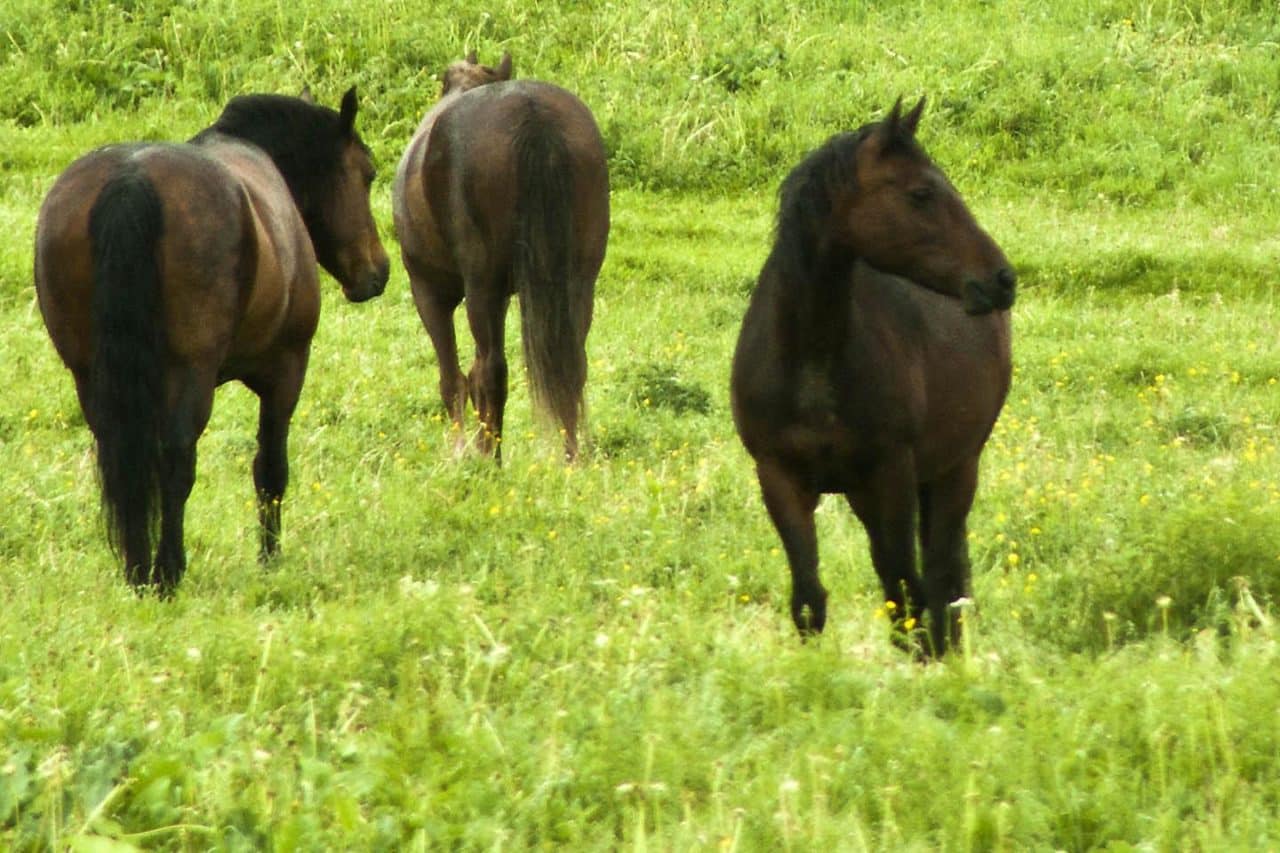

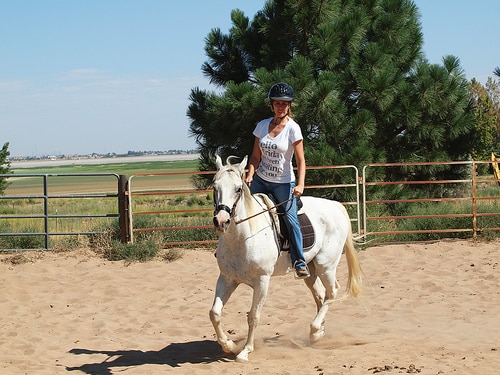
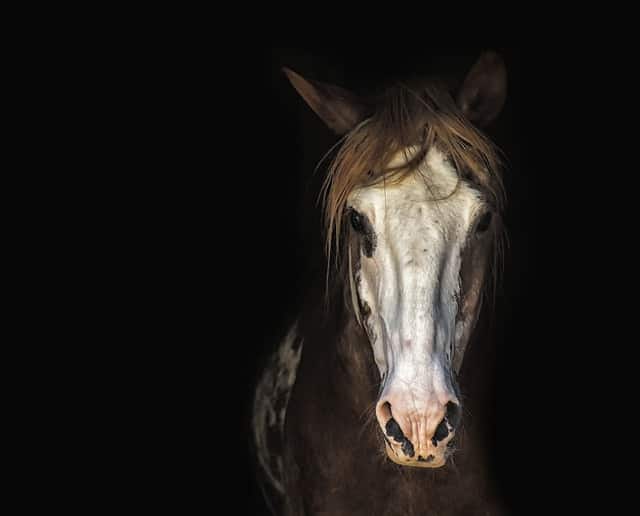
Hi, just wondering if there’s any rough guidance or rule of thumb on what the difference in cost might be between full board and partial board options? Some specific numbers would be great, but even some rough guidance like “partial board is typically ~xx% of full board for cost” would be a helpful approximation.
This information is very helpful for those who are looking for the best horse boarding service. If anyone wants an exceptional facility for an equine companion so you can contact here any time